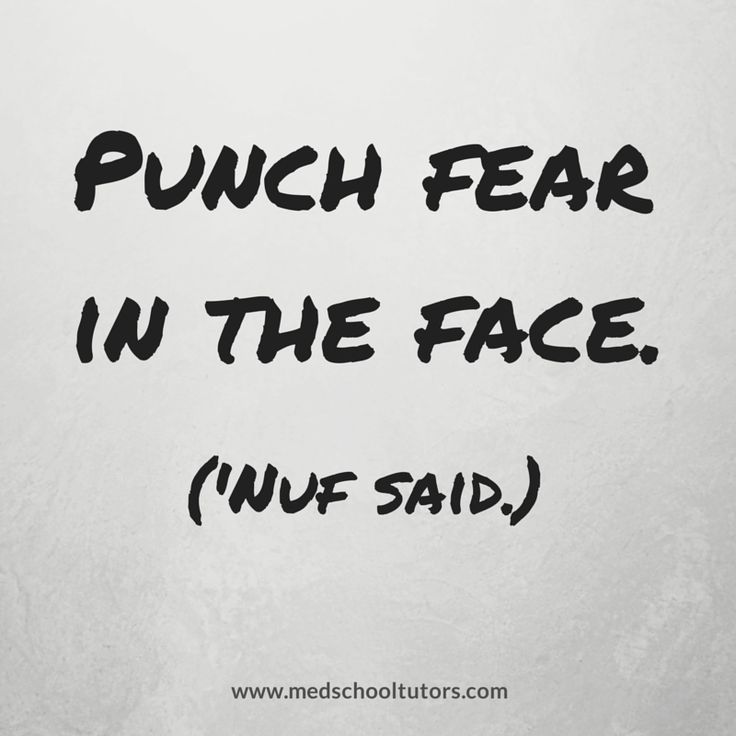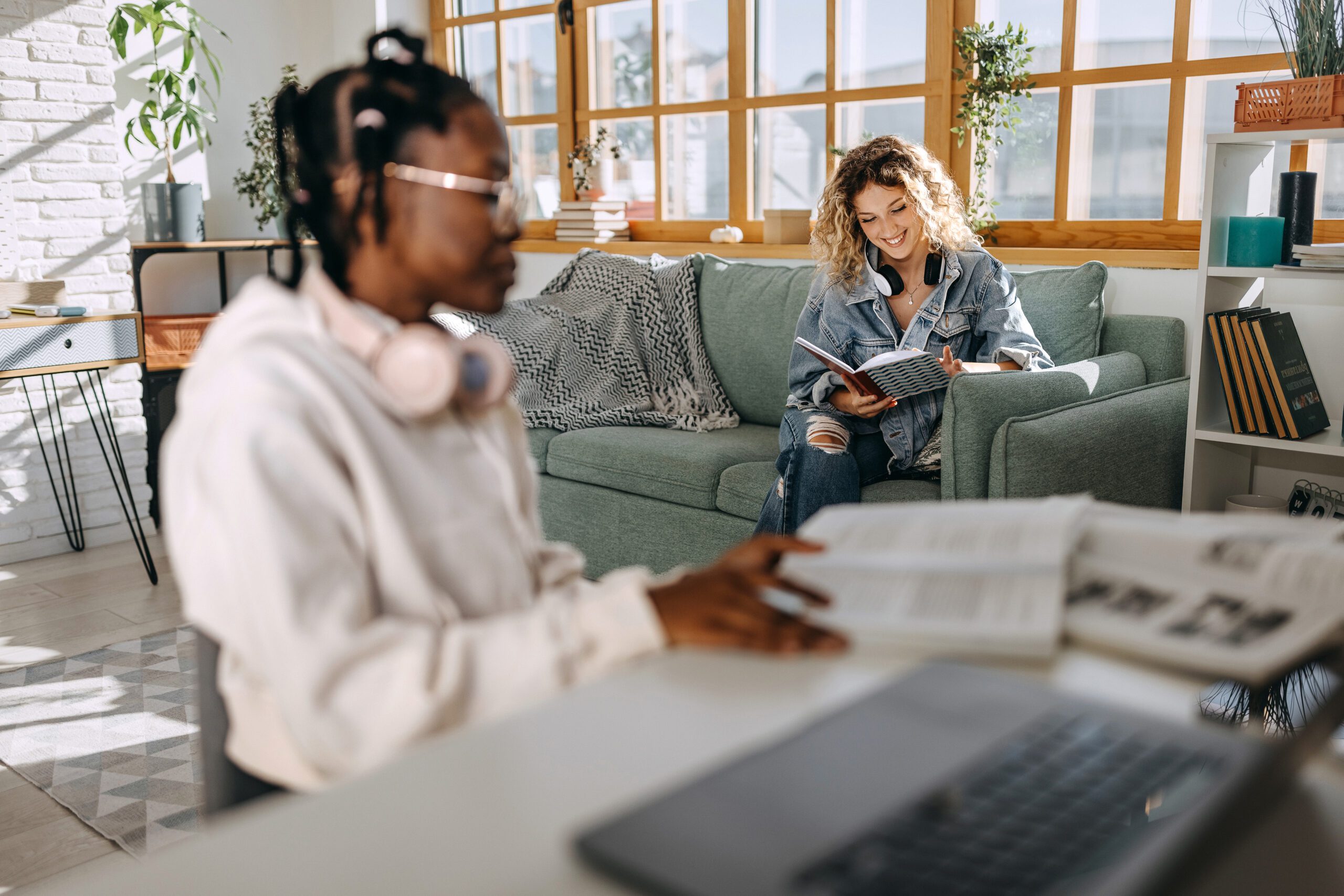What does help when it comes to keeping anxiety at bay, though, is having some awesome aces up your sleeve — and understanding WHY we have anxiety in the first place. Below are a bunch of tips. Use any and all that apply or work for you.
Use The Anxiety
First off, accept that anxiety is a common and often very normal experience. In some cases, stress can even help you. Now. How to use it.
If the anxiety’s not that bad (i.e. just the usual tight stomach or test-day jitters), you might be able to use it for motivation. Acknowledge and normalize the sensation by saying something like, “Of course I’m feeling [sensation]. I’m [insert the action you’re about to do that’s causing the anxiety.” Search yourself for why you’re feeling how you feel. By asking yourself “Why” until you feel you’ve gotten to the root cause, you may see your anxiety from a new angle or see something that you missed before that your body is trying to tell you.
Anxiety is a pretty powerful energy, and if you can harness it and use it in a positive way to have it help you do whatever you need to do to ensure you’re on top of your studying, that you’re not overconfident or slacking, all the better.
For example, in college, my roommate and I had a friend who was doing better than us in his courses (e.g. getting 98s and 100s on his Orgo exams) but you’d never know it from the way he acted before each test. He’d rattle off, “Did you guys study? Of course you didn’t. You guys are geniuses. You don’t need to study. I’m an idiot. I need to study. I was studying all night. You guys are going to ace the thing. I’ll probably fail. That’s why I studied so much….” That was all in one anxiety-ridden breath coming from him with no chance to retort. Either he had to work harder to get those scores or he was just afraid of a letdown, so this was all part of his method. But for those with more crippling anxiety, we say:
Beat Anxiety with Perspective
It’s surprisingly easy to do some basic cognitive therapy on yourself to get out of a nervous funk. While cognitive therapy is a bit more complex than is teachable in a blog post, the basic gist is that our feelings come from our thoughts, and our feelings aren’t our reality.
For example, it might be natural for you to feel anxious because you think that you are unprepared, or that you’ll never be prepared, or that everyone else out there knows more than you do. You’re not the only one who feels anxious. But the thought that led to that anxiety should not be accepted as truth. Examine it. Ask yourself if it’s really possible, in this test of first-year science, that everyone else out there could be better prepared or know more than you; if all the work you put in just went to waste, that all the knowledge you gained leaked out of your ears at night.
In cognitive therapy, these thoughts are known to be “automatic” and these beliefs to be cognitive distortions, of which there are a variety: catastrophizing, mind-reading, minimizing the positives and maximizing the negatives, etc. Doing cognitive therapy means becoming more mindful of these thoughts, and countering them with positive affirmations grounded in reality. If you need more help with it, I suggest you read Feeling Good by David Burns. It’s a very accessible book aimed at the layperson to help him to practice therapy on himself.
One last thing about this: The way that we study often reinforces our belief that though we’ve been studying forever, we still know very little. That’s because we focus less and less on the things we’ve mastered, and turn our attention constantly to what still eludes us. Keep this in mind and, as the test date approaches, go back more and review the things you’d mastered in the past, both to keep them fresh and to remind yourself that you DO know some things.
Decompress
Meditation, physical exercise, relaxation techniques, body scans, hypnosis, yoga, massages, spa days, and any number of other things can help you to decompress, take the edge off and relax. Below are little blurbs on a few of these techniques. Many apps can also help you with these. Some apps and albums that we’d recommend, both paid and free, are: Headspace, Power Nap with Andre Johnson, Take a Break, Sleep Soundly, Jon Kabat Zinn’s Wherever You Go, There You Are, and crystal bowl therapy. Nestmaven also offers a free online in-depth resource that explores how you can use mindfulness to improve your sleep, with links to studies to back it all up.
Most of these recommendations and those below are inexpensive and require little of you other than a bed, a floor, or a smartphone and headphones. But if you can afford to get a massage or a day at a spa, or if you’re already the kind of person who does those things, then there’s probably no better time to treat yourself to them than in the days before your test. And, the below techniques aren’t your style, one of the best ways to beat anxiety is to get your sweat on with physical activity—be it running, walking, cycling, circuit training, rock climbing or what have you!
Meditate
In short, meditation is about quieting your mind and focusing your attention. Just as they go over in Headspace’s free 10-minute guided meditation app, you don’t have to sit in a hugely uncomfortable position or seek a transcendent experience. It doesn’t even need to be spiritual. Very simply, all you need to do is sit in a comfortable position (sitting upright in a comfy chair is fine!) and let yourself enjoy some peace without an agenda.
There are many techniques, books, CDs, and classes out there to help you with this, but you can even give it a try on your own. Try sitting in a dimly lit room, silence your phone, and set a timer so you don’t end up worrying about going for too long. If you want to, you can put on some binaural music playing in the background (YouTube has many videos with music for meditation).
Close your eyes and focus your mind on your breath. Follow it in and out. Don’t stress about the fact that you can’t stay focused on your breath, and that your mind wanders. That’s what it does. Allow thoughts to occur and just bring your attention gently back to your breath when you notice your thoughts have wandered, and don’t beat yourself up.
Take Time to Just Breathe
Sit or lie down in a comfortable position. Close your eyes and focus on your breath and on the sine wave it forms, up and down. As you breathe in, feel your breath as it seems to go past your nose into your head, chasing away the darkness and cobwebs with cool, clean, and fresh light. As you breathe out, feel your body sinking into the chair, bed or floor. Breathe naturally, not excessively deeply. As you focus on your breathing, it will automatically relax, slow, and deepen. Don’t fight the tension in your muscles. Just let them sink into whatever’s supporting you, as you imagine them as rubber bands loosening up and lying limp. Turn your mind’s eye to the top of your head and scan down, toward your toes, stopping briefly at every body part, not forcing anything to relax, but just taking note of tension and relaxation, briefly, then moving on. Keep breathing.
Hypnosis
Don’t worry: I’m not suggesting you let someone make you quack like a duck in front of your friends. Again, in an overly simple way, hypnosis is about getting into a relaxed state and then using suggestion to talk to your unconscious and preconscious; to all those thoughts and feelings that rule your mind without much conscious awareness. It’s about replacing those negative beliefs with healthier, more positive ones. Many therapists do hypnosis, but there are also many apps, CDs, and YouTube clips that you can use on your own.
“Yog”
Did you know that “yoga” is actually pronounced closer to “Yog”? Loosely translated, it refers to the state or practice of being joined or in union. Though many people think this union refers to one of the mind and body, it’s really one of the mind or self with something higher, be it God, one’s soul, or the universe. And though we tend here to think of Yoga as being an exercise, it’s classically a state or outlook that can be practiced in any number of activities. For now, though, we can focus on the yoga with which we’re most familiar.
Again, there are scores of books, online videos, and classes to help you to learn yoga, and different positions and sequences of positions are useful for different purposes, all of which cannot be explained here. Regardless, though, all yoga intimately involves breathing (a general principle is that for forward bends, you breathe out, and for backward bends, you breathe in), which should be slow and controlled. Most yoga is meant to be done slowly and methodically. It should be something you do WITH your body, not TO your body. The focus on the body’s position, following the guidance of your breath, also functions to quiet your mind, so don’t make the aim to get into a certain awkward position, but rather, to be one with your body, your breath, and the position.
In addition, though, yoga sequences should be chosen to relieve anxiety and stress stored as tension in our body, as well as the tension that builds up from sitting at a desk all day. Look up videos on YouTube for Yoga For Sleep to do before sleep or any time you take a break. Or look up sequences of poses for people who sit at desks all day. There are many examples of both. In general, the former should be stretching out and loosening up the lower back, hamstrings, neck, shoulders, upper back, and upper arms. The latter should involve forward stretches and strengthening of muscles used to bend you backward (extension) to undo the hunched position that we adopt all day.

However you decompress, don’t fall into the trap of thinking of yourself as a victim in all of this studying, as if the exam is something that’s being done to you. When you get to a very difficult practice problem in your study guides, don’t think to yourself, “Great! I’m expected to be able to do this too now?!” You’re not being thrown to the wolves—there’s an explanation to that problem. Think of it as a task that you’ll soon have in your toolkit. Look back on all the tools you’ve accumulated since you started studying. Now go out there not as a victim, but as a warrior, chopping down passages and reducing problems to dust!
Finally, as a psychiatry resident, I have to say that none of the above are meant to be definitive treatments of an anxiety disorder. As psychiatrists, we recommend them to all of our patients, but the mainstays of treatment in psychiatry remain medication and therapy. If you’ve tried the above and are still suffering, or if these symptoms extend to many other arenas of your life, consider seeing a mental health professional. Many of our students at MST elected to enlist professional help with overcoming intense anxiety, and they have gone on to see tremendous results. Just remember that with the right mindset and tools, you too can punch fear in the face!





